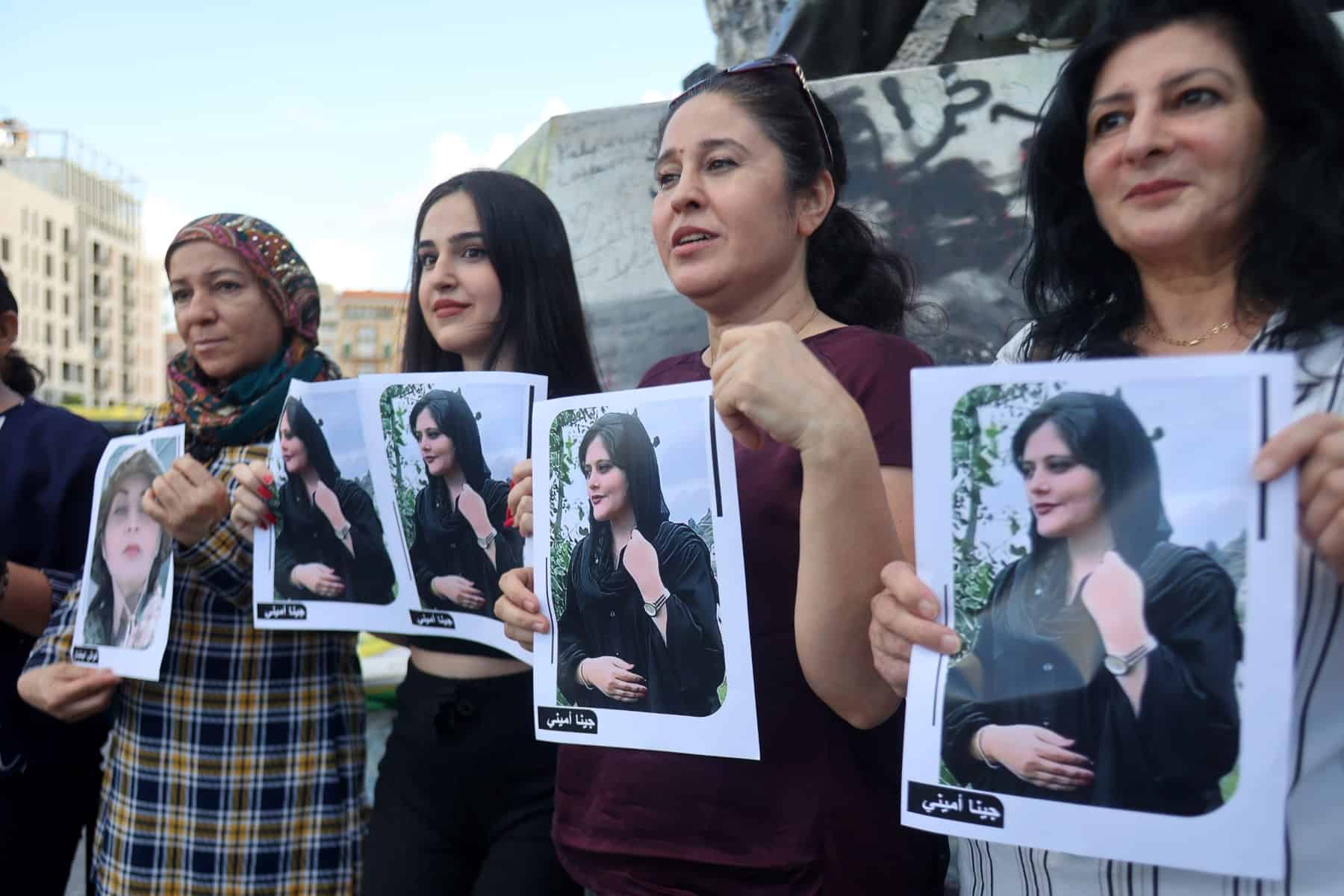At least 17 people have been killed as popular unrest flared Thursday across Iran over the death in custody of Kurdish woman Mahsa Amini, local media reported, as online services were cut in a security crackdown.
Amini, 22, died last week after her arrest by the Islamic republic’s feared morality police for allegedly wearing a hijab headscarf in an “improper” way, and news of her death sparked widespread outrage.
Protesters have been heard shouting “death to the dictator” and “woman, life, freedom” in video footage shared widely online during the biggest wave of demonstrations to rock the country in almost three years.
The US Treasury placed the morality police on its sanctions blacklist, holding it responsible for Amini’s death and citing the “abuse and violence against Iranian women and the violation of the rights of peaceful Iranian protesters”.
Some Iranian women have burnt their headscarves and symbolically cut their hair in protest at the strict dress code, echoed in solidarity demonstrations from New York to Istanbul.
The official death toll rose to at least 17, including five security personnel, according to local media.
But Iran Human Rights (IHR), an Oslo-based NGO, said it had counted at least 31 civilian deaths.
Iranians have rallied “to achieve their fundamental rights and human dignity… and the government is responding to their peaceful protest with bullets,” said its director Mahmood Amiry-Moghaddam.
Security forces have fired at crowds with birdshot and metal pellets, and deployed tear gas and water cannon, said Amnesty International and other human rights groups.
Demonstrators have hurled stones at them, set fire to police cars and chanted anti-government slogans, the official IRNA news agency said.
Unprecedented images have shown protesters defacing or burning images of supreme leader Ayatollah Ali Khamenei and late Revolutionary Guards commander Qasem Soleimani.
On Thursday, authorities arrested two female photographers, Niloufar Hamedi, of the reformist newspaper Shargh, and Yalda Moayeri, who works for the local press, as well as activist Mohammad-Reza Jalaipour, Iranian media said.
Iran International, a London-based television channel, said prominent freedom of expression campaigner Hossein Ronaghi was arrested as he was giving an interview to them.
‘I’m frightened’
There were fears violence could escalate after Iran restricted internet access and blocked messaging apps including WhatsApp and Instagram, as in past crackdowns.
The two apps were the most widely used in Iran after authorities blocked other platforms in recent years, including Facebook and Twitter.
“People in Iran are being cut off from online apps and services,” Instagram chief Adam Mosseri tweeted, adding that “we hope their right to be online will be reinstated quickly”.
IHR said mobile internet was completely cut off in the major northern city of Tabriz.
Activists have said that Amini, whose Kurdish first name is Jhina, suffered a fatal blow to the head after her arrest in Tehran — a claim denied by officials.
Iranian women on the streets of Tehran told AFP they were now more careful about their dress to avoid run-ins with the morality police.\
“I’m frightened,” said Nazanin, a 23-year-old nurse who asked to be identified by her first name only for safety reasons, adding she believed the morality police “shouldn’t confront people at all”.
Veteran CNN journalist Christiane Amanpour said a Wednesday interview with Iran’s ultra-conservative President Ebrahim Raisi in New York was scrapped after an aide insisted she wear a headscarf.
“I politely declined. We are in New York, where there is no law or tradition regarding headscarves,” Amanpour, who was born in Britain to an Iranian father, wrote on Twitter.
‘Enemy conspiracy’
Speaking in New York, where he attended the UN General Assembly, Raisi complained of a “double standard”, pointing to Israeli actions in the Palestinian territories and the deaths of Indigenous women in Canada.
But he later told reporters that Amini’s death “will certainly be investigated”, confirming an earlier announcement by authorities that there would be a probe.
In a speech at the UN on Thursday, Israeli Prime Minister Yair Lapid accused Tehran’s leadership of conducting an “orchestra of hate” against Jews.
He said Iran’s ideologues “hate and kill Muslims who think differently, like Salman Rushdie and Mahsa Amini”.
The protests are among the most serious in Iran since November 2019 unrest sparked by a sharp rise in petrol prices. The crackdown then killed hundreds, according to Amnesty.
The unrest comes at a particularly sensitive time for the leadership, as the Iranian economy remains mired in a crisis largely caused by sanctions over its nuclear programme.
Iran’s powerful Islamic Revolutionary Guard Corps labelled the protests a “conspiracy of the enemy” and “a vain attempt doomed to failure”, while praising the “efforts and sacrifices of the police”.
A rally in support of the hijab and a conservative dress code for women was announced for Friday by Iran’s Islamic Development Coordination Council, IRNA reported.








